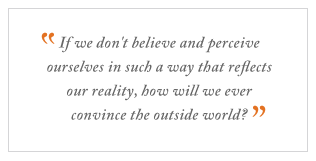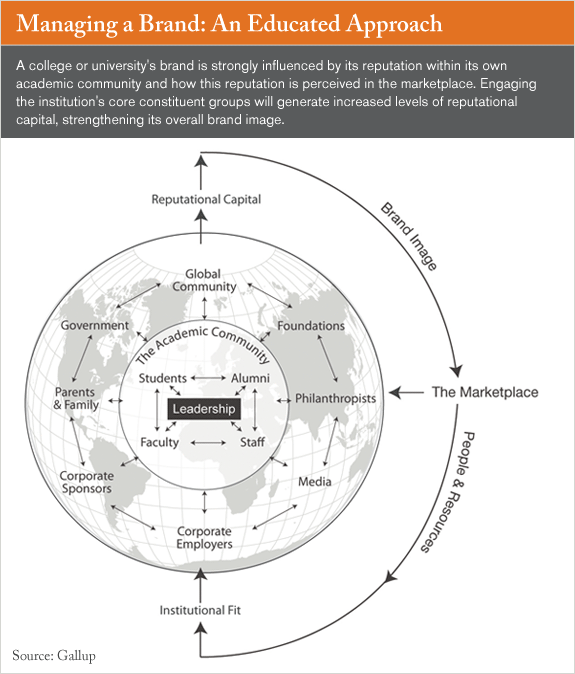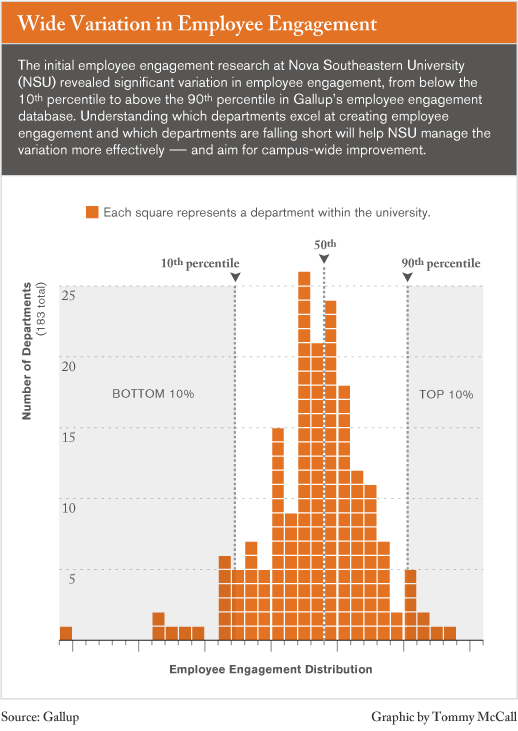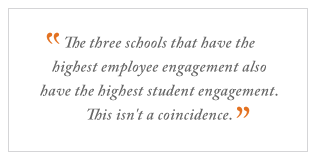Nova Southeastern University in Fort Lauderdale, Florida, is one of the healthiest colleges you may have never heard of. NSU has more than 28,000 students, is the sixth largest independent university in America, and has net assets exceeding $383 million, including an endowment of nearly $50 million.
Clearly, NSU is doing something right. But what has worked so well in the university's past could undermine NSU's future.
 |
Successful silos
NSU was founded in 1964 by "a progressive group of men and women united to establish an academic institution that would break new ground in educational excellence and community service," according to NSU's president, Ray Ferrero Jr., J.D. Many elements make up a successful university, but one key to NSU's success has been its performance-based budgeting system. Based on this model, the system allocated the most funding to the best performing schools and colleges within the university.
This was the path set by NSU President Emeritus Abraham Fischler, Ed.D., who followed the Harvard model of decentralized funding and management of "every tub on its own bottom." In this approach, each academic unit functions as an independent entity that is directly responsible for its finances and management. During rough times, when NSU had limited resources, this model fostered an extremely competitive environment across the schools and colleges within NSU. But it also encouraged academic units to function as silos, which could undermine the presentation of a unified institutional brand.
Branding
"For the past decade, we've been focused on improving the curricula throughout our programs -- building the technological and campus infrastructure and expanding the student population," says Frank DePiano, Ph.D., vice president of academic affairs at NSU. "We are at the point of our evolution where we are able to focus on building a stronger NSU brand through the unification of our people."
And NSU wants a stronger brand. Wanting a stronger brand is common in academia; many college administrations are going to great lengths -- even changing their universities' names -- to create a stronger brand image. (See "To Woo Students, Colleges Choose Names That Sell" in the "See Also" area on this page.)
But Ferrero wasn't sure how the NSU brand image was viewed on or off campus. "Understanding how we are perceived internally and externally based on the quality education we provide is what matters to us," he says. "If we don't believe and perceive ourselves in such a way that reflects our reality, how will we ever convince the outside world?"
To determine if there were gaps between perception and reality, NSU asked its constituent groups what they thought. Working in collaboration with Gallup, NSU assessed groups that affected the vibrancy of the culture and economic health of the institution, including students, faculty, staff, administration, board of trustee members, and alumni. (See graphic "Managing a Brand: An Educated Approach.")
 |
The assessment also netted NSU the objective data it needed to begin to unify the university. "A holistic approach provides greater insight than measuring ourselves in the mono-focused manner to which we're accustomed," says Ron Chenail Jr., Ph.D., vice president of institutional effectiveness at NSU.
"Historically, we have measured student engagement across a few of our academic units," Chenail says. "We had never taken a concurrent measurement of all the key constituents such as faculty, staff, students, and alumni across the university, which has proven to us that a centralized approach definitely provides much greater value. Through this centralized approach, our level of understanding is enhanced and our level of research is too."
The data had a few other benefits as well. Chief among them was that they allowed the college to implement a HumanSigma performance management process.
HumanSigma is a methodology that enables organizations to assess, manage, and improve the employee-customer relationship -- in this case, the university-student relationship. A HumanSigma management approach can help organizations boost financial performance, often dramatically. But it also turns up important information such as variation in employee engagement among work units and the impact this variation has on student engagement.
Hidden pockets of excellence
Uneven performance costs organizations millions of dollars every year, and within any organization, there's often more variation than organizational leaders expect. It's not unusual for a HumanSigma assessment to uncover wide variation within an organization when compared to Gallup's global database of work units. (See "A Popular Idea That's Dead Wrong" and "Knowing Your Company's Vital Signs" in the "See Also" area on this page.)
NSU is no exception. The university's work-unit variability on employee engagement ranged from below the 10th percentile to above the 90th percentile. Knowing which departments excel at creating employee engagement -- and those that don't -- enables NSU to manage the variation more effectively and push for improvement. (See graphic "Wide Variation in Employee Engagement.")
 |
"Gaining objective data at the work-unit level provides us with the granular information necessary to make incremental improvements throughout NSU," says George Hanbury, Ph.D., executive vice president and chief operating officer at NSU. "We expect the cumulative impact of this change to be significant."
So far, however, the change has been more transformative than incremental. Any NSU work unit that receives an employee and/or student engagement scorecard is required to formulate a commitment plan to foster improvements through collaborative efforts. The commitment plans are centralized in a Web-based portal, and NSU's office of institutional effectiveness is monitoring the execution of these plans.
The office of institutional effectiveness is also analyzing these plans -- NSU wants to know where the work units are focusing their attention. The next administration in October 2008 will enable NSU to compare the assessments to understand where, if, and how much these work units have improved against their engagement goals. It's a step toward dismantling the silos that stood in the way of a strong and unified brand.
Student engagement
Decades of 优蜜传媒research with millions of people shows that one of the best ways to create sustainable engagement in a consumer group is to sustainably engage employees. The university's HumanSigma research indicated that things are no different at NSU.
"Constituent relationships are pivotal to our success," says Hanbury. "The three schools that have the highest employee engagement also have the highest student engagement. This isn't a coincidence." In fact, the student poll results show that student/faculty interactions influence student well-being more than any other factor.
 |
Not only will organically grown student and employee engagement attract and keep students and employees, it also provides a basis for NSU's brand, which was one of the university's primary concerns.
Back to the brand
NSU has gone to great lengths to build its brand. The university has also found a way to work several other crucial measures -- employee and customer engagement, work performance, HumanSigma -- into its brand-building effort. But one of the most innovative ways NSU has chosen to build its brand is with The Chronicle of Higher Education.
In fact, NSU is the first educational institution ever to leverage the branding aspect of an alliance between The Chronicle of Higher Education and Gallup. NSU will measure its external brand, via The Chronicle/优蜜传媒Panel, on national and state levels.
"Understanding the differences between state and national perceptions will provide greater insights as to which messages to broadcast nationally based on the strengths of our state-level brand image," says David Dawson, executive director of university relations at NSU. "And utilizing The Chronicle of Higher Education to help broadcast the right NSU messages throughout academe will help attract the right administrators and faculty we need to support our growth, while helping to improve the peer review ratings for the U.S. News and World Report rankings."
Meanwhile, NSU is still pursuing the hard work of growing a university. It has sought out information honestly and successfully that might not be flattering -- the authentic perceptions of its constituents, the performance variability of its work units, and the genuine engagement levels of its employees and students. More importantly, NSU is working to find and implement the most effective methods for improving itself in every venue.
This is not an easy process, nor is it painless. But it does fulfill the school's founding mission: "to establish an academic institution that would break new ground in educational excellence," as Ferrero puts it. And NSU is unquestionably breaking new ground.